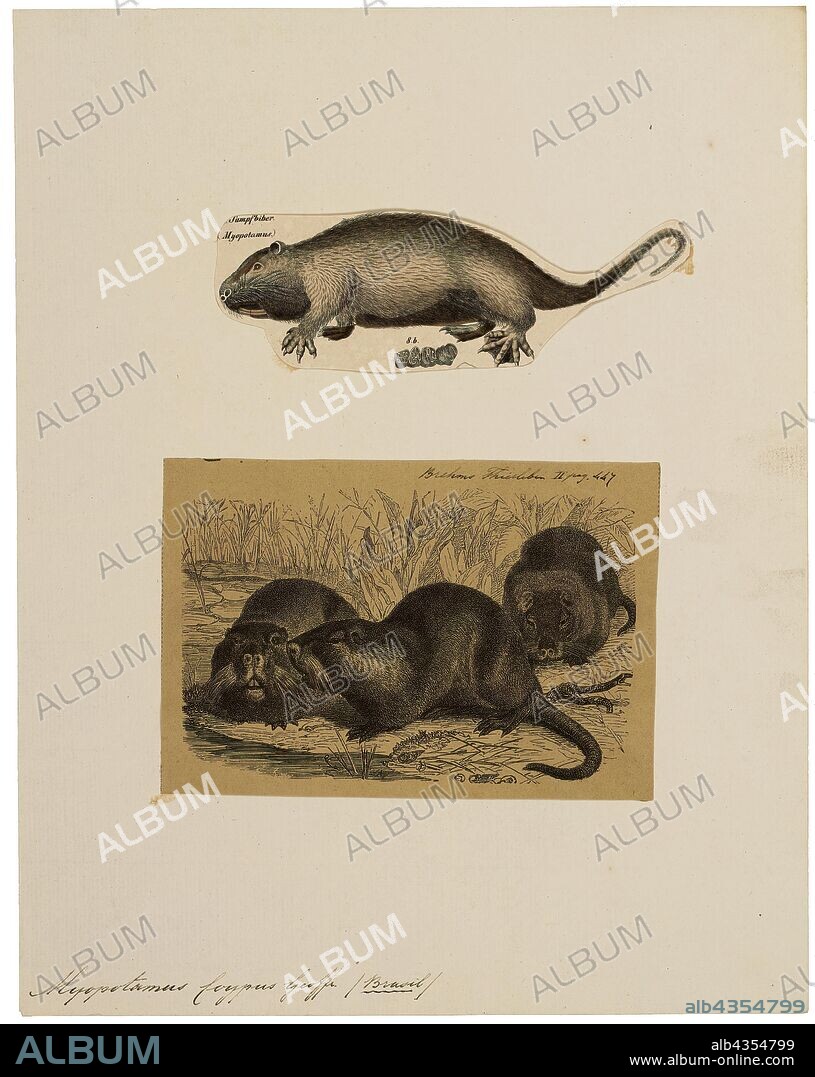alb4354799
Myopotamus coypus, Print, The coypu, also known as the nutria, is a large, herbivorous, semiaquatic rodent. Classified for a long time as the only member of the family Myocastoridae. Myocastor is actually nested within Echimyidae, the family of the spiny rats. The coypu lives in burrows alongside stretches of water, and feeds on river plant stems. Originally native to subtropical and temperate South America, it has since been introduced to North America, Europe, Asia, and Africa, primarily by fur farmers. Although it is still hunted and trapped for its fur in some regions, its destructive burrowing and feeding habits often bring it into conflict with humans, and it is considered an invasive species., 1700-1880.

|
Add to another lightbox |
|
Add to another lightbox |



Buy this image.
Select the use:

Caption:
Myopotamus coypus, Print, The coypu, also known as the nutria, is a large, herbivorous, semiaquatic rodent. Classified for a long time as the only member of the family Myocastoridae. Myocastor is actually nested within Echimyidae, the family of the spiny rats. The coypu lives in burrows alongside stretches of water, and feeds on river plant stems. Originally native to subtropical and temperate South America, it has since been introduced to North America, Europe, Asia, and Africa, primarily by fur farmers. Although it is still hunted and trapped for its fur in some regions, its destructive burrowing and feeding habits often bring it into conflict with humans, and it is considered an invasive species., 1700-1880
Credit:
Album / quintlox
Releases:
Model: No - Property: No
Rights questions?
Rights questions?
Image size:
4224 x 5310 px | 64.2 MB
Print size:
35.8 x 45.0 cm | 14.1 x 17.7 in (300 dpi)
Keywords:
1700-1880 • ACTUALLY NESTED WITHIN ECHIMYIDAE • AFRICA • AFRICAN • ASIA • BRING • BURROWS ALONGSIDE STRETCHES • CLASSIFIED • CONFLICT • CONFLICTS • CONSIDERED • COYPU LIVES • COYPU • DESTRUCTIVE BURROWING • EUROPA • EUROPE • FAMILIAR • FAMILIES • FAMILY • FEEDING HABITS • FEEDS • FUR FARMERS • FUR • HERBIVOROUS • HUMANS • HUNTED • INVASIVE SPECIES • LARGE • LONG TIME • MEMBER • MYOCASTOR • MYOCASTORIDAE • MYOPOTAMUS COYPUS • NORTH AMERICA • NORTH AMERICAN • ORIGINALLY NATIVE • OTTER • PEOPLE • PRIMARILY • PRINT • REGIONS • RIVER PLANT STEMS • SEMIAQUATIC RODENT • SPINY RATS • SUBTROPICAL • TEMPERATE SOUTH AMERICA • TRAPPED • WATER
 Pinterest
Pinterest Twitter
Twitter Facebook
Facebook Copy link
Copy link Email
Email
